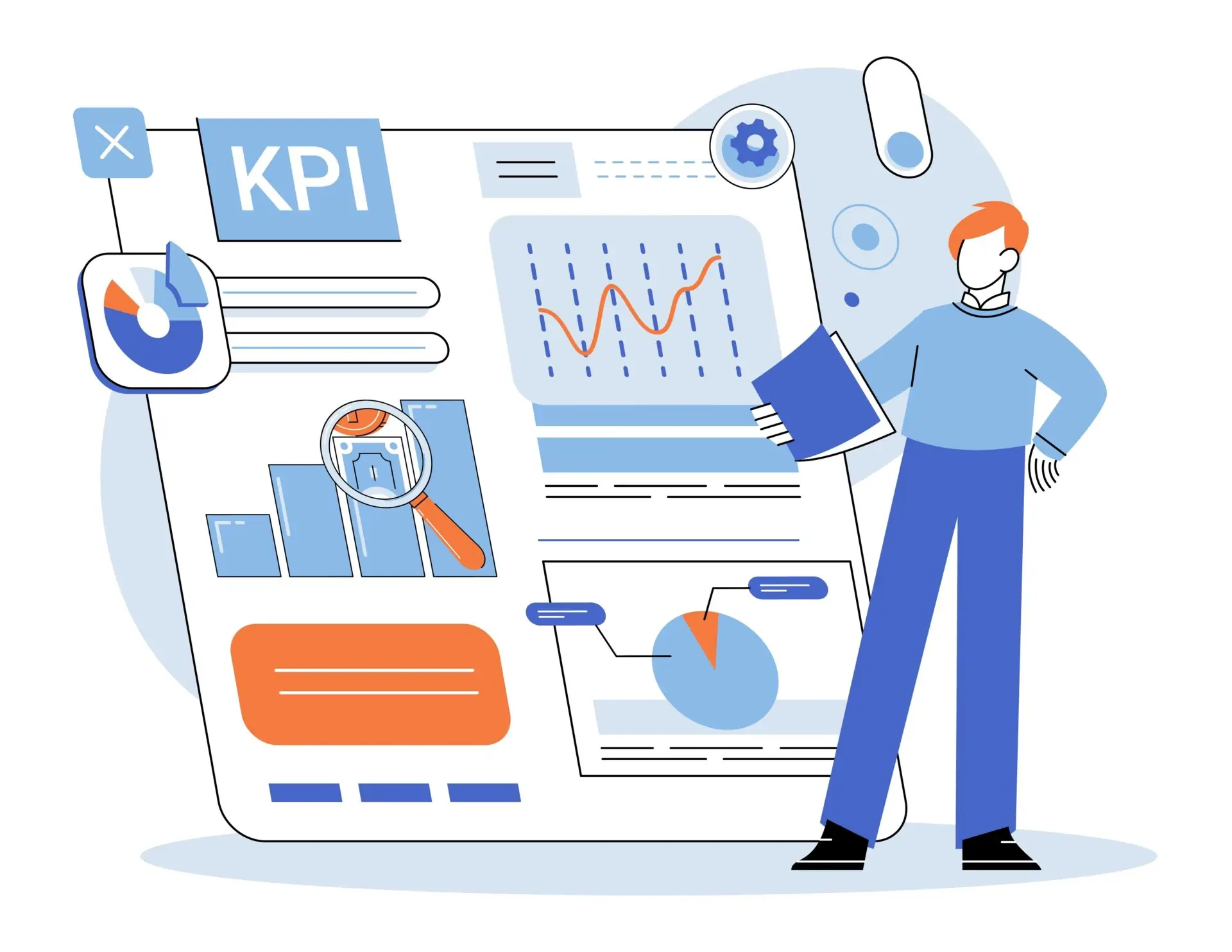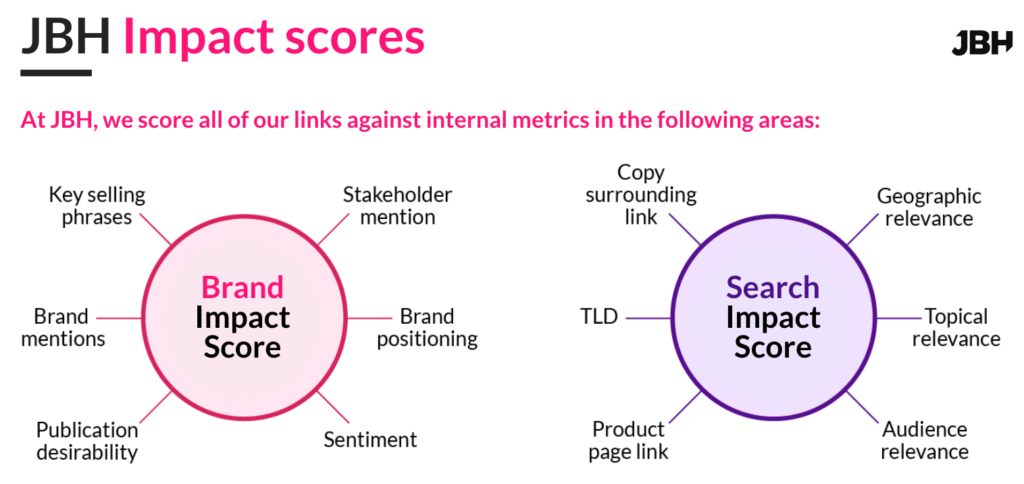Digital PR Isn’t Link Building. It’s the Most Profitable Channel You’re Ignoring
Digital PR

We can all agree that KPIs are important when it comes to focusing the efforts behind a digital PR campaign, but could we be doing a better job at setting them?
In the world of digital PR, it’s not about throwing enough content into the digital void and seeing if it sticks, it’s about KPI’s (Key Performance Indicators). These targets are your secret weapon, helping you to measure the impact of your campaign far beyond just the quantity of links it generated, which I am confident your client will thank you for.
Imagine you’re baking a cake. You wouldn’t just combine a bunch of ingredients together and hope that your cake turns out perfectly, right? You’d measure each ingredient and double-check the baking time.
KPIs are the same – they are the specific measurements you need to bring together a meaningful digital PR campaign. They track how well your campaign is performing, and allow you to adjust the digital PR strategy (your recipe) to get the best impact.
In the fast-paced and hyper-competitive world of PR, results matter. And here’s why I think KPIs are essential:
Measure Success: KPIs help to provide a clearer picture of how well your digital PR activity is performing against wider marketing and business objectives, such as increasing brand awareness, lead generation, organic traffic, referral traffic, and keyword rankings.
Improving your digital PR strategy: Your KPIs will reveal what’s working well and what isn’t working so well. For example, maybe proactive digital PR activity is achieving better results than your scaled-up campaigns. You can use this insight to identify and refine what activity you plan next.
Reporting: Imagine presenting results to your client backed by data on organic growth or lead generation. KPIs provide concrete evidence of the value your digital PR efforts bring to the table.
There is no one-size-fits-all approach to setting KPIs for digital PR activity. Believe me, we’ve learned the hard way. A much better solution is to tailor your KPI to fit the brand, territory, and market your client operates within.
For example, for a beauty brand with lots of mid-range products, you might want to set KPIs around coverage which includes the following:
✅ The name of the products
✅ Links to products and category pages
✅ Imagery of the product
✅ Name of the founder or spokesperson featured within the coverage
✅ Landing coverage on publications where competitors haven’t yet been seen
✅ Increased referral traffic and social media shares
✅ Sales of the featured products
But for a B2B brand in the healthcare industry, you might want to include KPIs around coverage, which include the following:
✅ Industry-facing publications
✅ Spokesperson or internal expert commentary featured within the coverage
✅ Expertise or data to prove credibility and build trust
✅ A link to the credentials area of the website
✅ Whether the brand is featured in isolation, or is part of a round-up with competitors
Each brand will be different and place importance on different elements, which is why it’s vital to be aligned from the outset of activity.
The best KPIs are the ones that are directly tied to your client’s overall business objectives.
Here are some common goals and the corresponding KPIs to consider:
Remember, KPIs are a journey, not a destination. As you gather data and refine your strategies, your KPIs will evolve too. Don’t be afraid to experiment and find what works best for your unique campaigns and goals.

The digital PR community has spoken and it seems that there are some common issues we all seem to face time and time again, when it comes to setting targets around our digital PR activities.
Below, I have taken the most common KPI red flags, explained why I think they’re not a good idea, and suggested alternative ways to set targets to hopefully achieve the same end result, but in a much more measured manner.
| KPI Red Flags | Why it’s not a good idea | What to do instead! |
| Setting a KPI based solely on links, based on achieving a cost-per-link figure. | A link KPI is often set in isolation from other metrics and doesn’t tell the true story. Just because something can be counted does not mean it can be measured. | Include a link placement KPI as part of a wider suite of measurement metrics. |
| Setting a link quality KPI based on domain authority or domain rating. | For some brands, the most powerful and relevant links are niche websites, which typically have a lower domain authority or domain rating. | Include elements such as relevance to the brand and audience demographics to prove how valuable the coverage is. |
| Setting a link-only KPI which doesn’t include brand mentions. | While linked coverage is the most desirable, there are benefits to brand mentions not only from an EEAT perspective but from a brand awareness perspective too. | Include elements such as branded search traffic to discover whether the brand mentioned is having an impact on brand awareness. |
| Relevance not taken into consideration. | Linked coverage on a small website in a relevant niche, might be more valuable than linked coverage on a national newspaper. | Take some time to consider the impact that a relevant, but niche website might have on lead generation or brand recall. |
| Setting a KPI around type of coverage – eg: ‘only B2B links are valuable to our brand’. | Audiences consume all different kinds of media, not just what we ‘think’ they consume. | Coverage for a B2B brand on a B2C publication will still have value, even though it’s not an industry publication. As long as the coverage is relevant, it’s still valuable. |
| Changing KPIs mid-way through activity without first looking into the data to see if this would be achievable. | Even if a client wants to increase budget to get more results, it may be that there simply aren’t enough stories. | Consider agreeing to increase the timeframe within which the new KPIs need to be reached. |
| Setting weekly or daily targets without considering the ebb and flow of media opportunities. | There are many PESTLE (Political, Economic, Sociological, Technological, Legal and Environmental) events that can impact media opportunities. | Fully research any events that may lead to media saturation during the timeframe of the campaign and manage the expected KPIs with the client. |
It can be easy to take KPIs out of context, particularly if you’re working towards a specific budget.
We can’t blame brands for doing a simple calculation whereby they take the budget and divide it by a KPI, giving a cost per activity.
On the surface, it does make sense to do this, especially when feeding budgets back to the C-suite or board of directors.
However, I would argue that this is where we’re going completely wrong.
Taking the simplified examples above of the B2C and B2B beauty/health brands – even if they have the same marketing budget to spend on digital PR activity, their KPIs would (and should) be wildly different, because their marketing objectives will be different.
In my view, there are three key things we all should be doing first, in order to set reasonable, effective, and achievable KPIs.
For example, the General Election could make it difficult for light-hearted campaigns to get cut through in the next few weeks. There’s also a big election coming up in the USA in November. These are all factors that could feed into the type of KPIs you set for your digital PR work over the next few months.

Now that you have an idea of which KPIs you’d like to track, how do you set effective targets?
Enter the magic of SMART goals:
Specific: Don’t just state “increase brand awareness.” Aim for a 20% rise in website traffic within 3 months.
Measurable: You need to be able to track your progress. Use website analytics tools and social media insights to monitor your KPIs.
Attainable: Set challenging but achievable goals. Don’t aim for a 1000% increase in website traffic overnight.
Relevant: Ensure your KPIs directly connect to your overall marketing goals. Don’t track vanity metrics if your aim is lead generation. More information on creating relevant digital PR campaigns can be found here.
Time-bound: Give yourself a timeframe to achieve your goals. This creates a sense of urgency and helps you track progress.